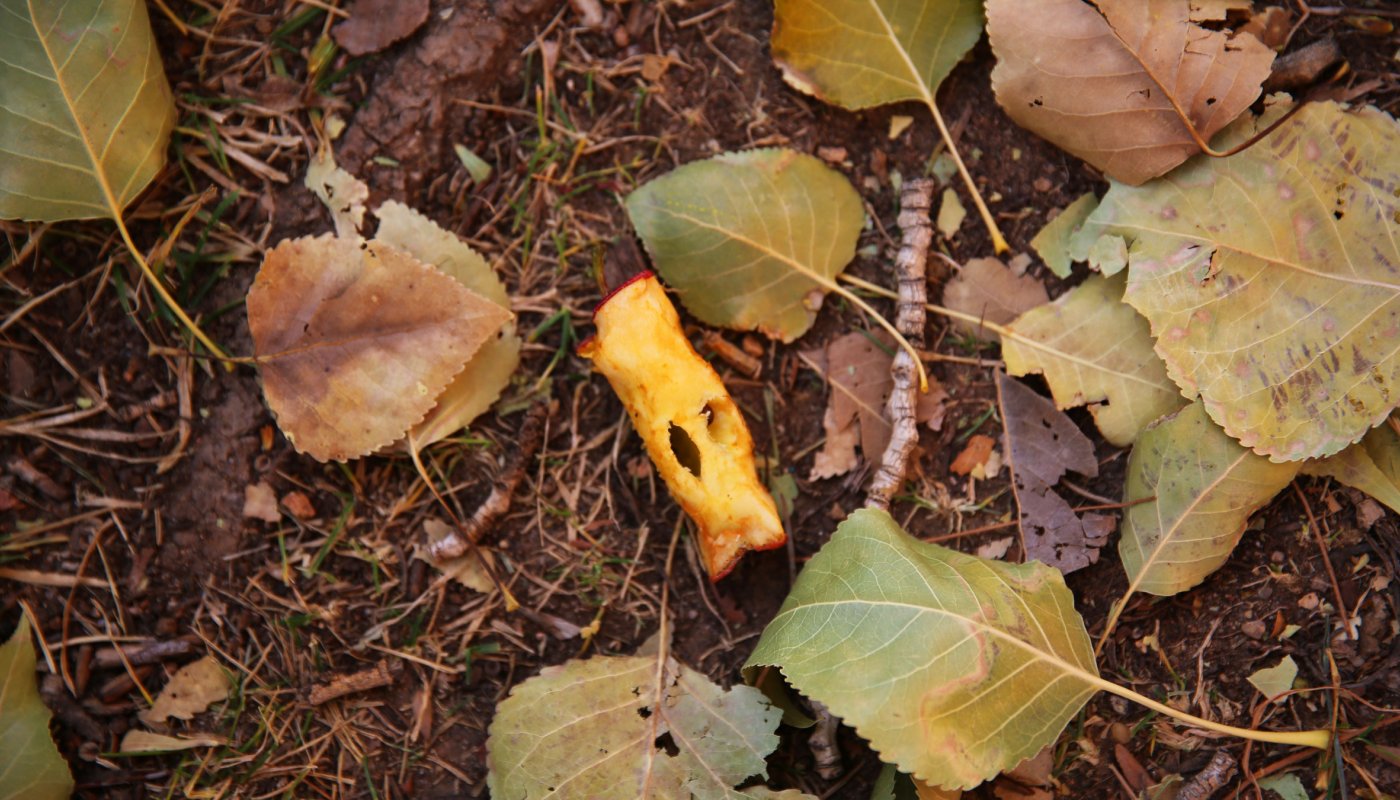
An apple core can be found on trails nearly two months after you leave it there. Photo by Emily Reed.
Pop quiz: You’re biking with a friend, zipping along a semi-rural road, when your buddy pulls a banana from his jersey, peels it with his teeth, and flings the skin into the ditch. What do you say?
a. “Dude! That’s littering.”
b. “Dude! What the f*ck?”
c. Nothing, because I don’t want to make waves.
d. Nothing, because I don’t see the problem.
A lot of people, I think, would opt for C or D. Well, I’m here to make a case for A. Or, if you don’t shy from strong language, B. The old hikers’ maxim “Take nothing but pictures, leave nothing but footprints” doesn’t make an exception for food scraps—and it shouldn’t.
“But it’s just a banana peel,” I imagine some of you saying. “It’s organic, it’ll decompose!” That’s a common justification for tossing banana peels, apple cores, and so on out a car window or along a trail. The hypothetical cyclist from our quiz would almost certainly reach for that defense.
It’s true, technically, that apple cores and banana peels are natural. But natural litter is still litter. And this stuff doesn’t disappear nearly as fast as you might think. (Incidentally, I have a friend who swears it’s OK to dispose of his gum by spitting it out on the ground, because—wait for it—“it will decompose.” This friend is wrong. And gross.)
Some folks seem to assume that fruits and vegetables left outside will shrivel, turn black, and disintegrate in a matter of hours, like a time-lapse video from middle school biology. In fact, an apple core can take two months to decompose; a banana skin or orange peel, two years, leaving plenty of time for animals who shouldn’t eat it to come along and eat it. Plus, while nature does its thing, that trash—and let’s not mince words, that’s what it is—is an eyesore. It’s also a visual cue to other passers-by that tossing their own trash isn’t a big deal. In other words: Litter begets litter.
The next time you witness such casual tossage, then, ask the perpetrator: Would you be cool with a stranger flinging a “natural” banana peel into your front yard? No? Why, then, do you think it’s acceptable to chuck one in the woods? Probably he’ll say, “Because the woods are huge and I don’t live there and, well…” OK. He’ll be right.
But, dammit, he’ll also be missing the larger point—forest for the trees, as it were—which is that outdoor spaces constitute a sort of yard that belongs to all of us. Can’t we all agree to do our parts to keep it free of garbage? Even the kind that, eventually, will rot? Are we really so lazy that we can’t hang on to a lousy apple core until we find a trash can or compost bin? Isn’t it just as easy to tuck that banana peel back into the jersey pocket whence it came?
These are the questions I would encourage all of us to keep in mind.
By the way: That hypothetical cyclist? I know where he’s coming from. Back when I was a dedicated roadie, I regularly discarded banana peels along the side of rural roads, using the old “it’ll decompose” excuse. Gradually, I wised up—and my little corner of the world got a little bit cleaner, a little bit more pleasant.
Naturally.